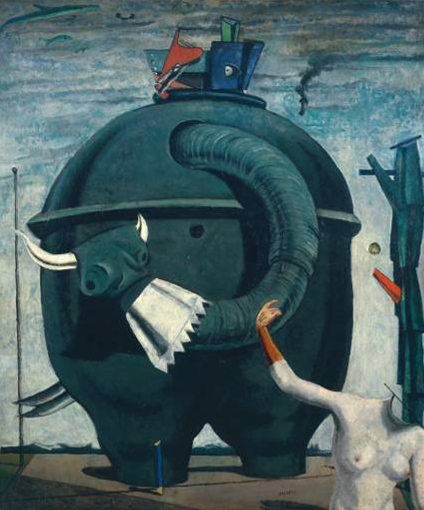MAX ERNST thought Dadaism was museum-proof. The idea of an exhibition on the subject, he said in later life, was ''a contradiction in terms - like trying to capture the violence of an explosion by presenting the shrapnel''. So what would he have made of ''Max Ernst: A Retrospective'', at the Tate Gallery? Maybe, as it turns out, he would have approved. His work remains disconcerting, its oddity booby-trapped. A good Ernst is not shrapnel. It is an unexploded bomb.
Ernst pioneered Cologne Dada, was a founder member of the Surrealist movement and may even have inadvertently invented Abstract Expressionism: he fled from France during the Second World War and is said to have introduced the young Jackson Pollock to drip painting. Yet he didn't start out promisingly. The earliest Ernsts at the Tate are dull, murky things, painted in an assortment of borrowed styles. Landscape (Town with Animals) is characteristic: Franz Marc cows loom inexplicably over a Cubo-Futurist cityscape, where a bowler-hatted gent and a swooning maiden are involved in some impenetrable drama. Yet even such breathless juvenilia suggests, retrospectively, the nature of Ernst's talent. Early incoherence would mature into a genius for dislocation, for loaded obscurity.
Landscape (Town with Animals) was painted in 1913, one year before the artist's first death. ''Max Ernst died on 1 August 1914,'' he wrote later. ''He experienced his rebirth on 11 November 1918 as a young man who was out to become a magician and to discover the myth of his era.''
Ernst placed his ''rebirth'' in 1918, but it actually seems to have occurred during the following year while he was leafing through ''the pages of a printed catalogue''. He was struck, he later recalled, by the advertisements, illustrating ''objects relating to anthropological, microscopical, psychological, mineralogical and palaeontological research. Here I...


